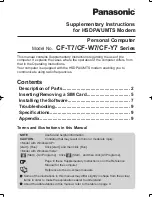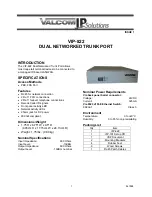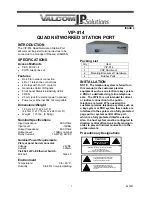
Rev 02, 09/21
Perma Pure LLC
• A Halma Company • [email protected] • www.permapure.com
Telephone: 7
32-244-
0010 • Toll Free: 800
-337-
3762 • Fax:
7
32-244-8140
1
001 New Hampshire Ave.,
L
akewood, NJ 08701 USA
Check that instrument air, sample gas inlet and outlet, and purge exhaust/filter drain connections have been
made and are operational.
All operating parameters are set and the system is fully tested at the factory. However, shipping and handling
of the unit may have affected some of the settings so an initial check is important.
8.2.1
Drain and purge exhaust lines
Confirm that both ports are properly connected. This is extremely important! Some sample gas will be present
and must be vented properly!
8.2.2
Instrument air source
Turn on instrument air to the system (60 Psig). Air will begin exhausting from the vent port. If the airflow is
absent check for proper instrument air pressure at the inlet to the system.
8.2.3
Flowmeter and Needle valve
Confirm the flow of purge gas flow through the PD sample dryer is 5 SLPM. This must be verified with the
vacuum line disconnected from the eductor. See figure below. This can be done by pushing the release ring on
the push-in tube fitting towards the body of the fitting and then pulling the tube out. When re-installing be sure
the tube is completely seated in the fitting. With the vacuum line attached, the flow will read significantly
above 5 SLPM (approximately 10 LPM).
8.2.4
Vacuum gauge
Verify that the sample gas dryer purge air vacuum is approximately 20 inHg. Since the instrument air supply
pressure may vary within the specified range, the vacuum level will vary slightly from application to application.
With the purge rate set at 5 SLPM (flowmeter reading will be higher due to high vacuum level) and instrument
air supplied at 60PSIG, the vacuum level is expected to be approximately 20 in-Hg. Should the vacuum fall off
considerably, check the instrument air supply pressure. If the vacuum remains low < 15inHg, clean the eductor.











































